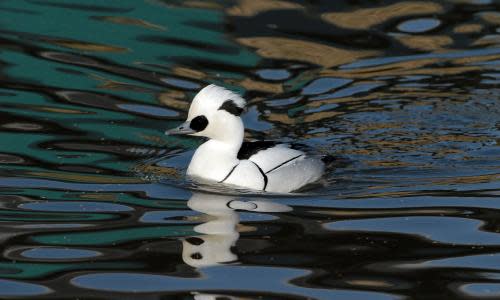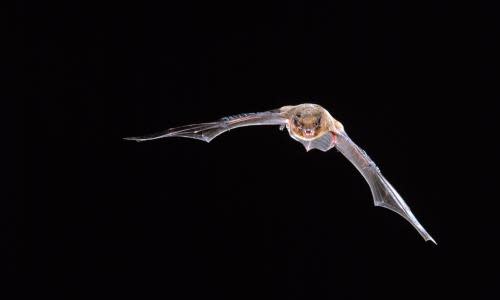Wildlife quiz: discover more about the creatures that call Heathrow home
How many different species of plants and creatures call Heathrow airport home?
1,234
2,836
5,162
9,173
How many new species of flora and fauna were discovered at Heathrow airport and surrounding sites last year?
15
62
108
404
Belted galloway cow Why is maintaining grasslands with grazing livestock better than mowing?
Creates different micro-habitats in the grassland for a greater variety of plants and animals to live in
Doesn’t require diesel-powered vehicles
Improves the quality of the habitat
All of the above
Honey bee research
EMBARGOED TO 1700 THURSDAY MAY 22 File photo dated 13/3/2014 of a honey bee collecting pollen from snowdrops in Teesdale, County Durham. Honey bees's foraging preferences can provide valuable information for governments about how to better manage rural landscapes, according to new research. PRESS ASSOCIATION Photo. Issue date: Thursday May 22, 2014. In the past two decades, the European Union has spent 41 billion euros ( 33.4 billion) on agri-environment schemes (AES), which aim to improve the rural landscape by bringing in changes such as the creation of areas for wildlife around crop fields. There are different levels of AES, although few studies exist evaluating how wildlife responds to the schemes, researchers at the University of Sussex have said. See PA story ENVIRONMENT Bees. Photo credit should read: Owen Humphreys/PA WireApproximately how many bees are in Heathrow’s 24 beehives?
8,000
450,000
1.3m
7.5m
Duck fares better in special areas
Embargoed to 0001 Monday January 26 Undated handout photo issued by WWT of a smew drake, a rare European duck whose habitat is changing because of global warming is doing twice as well in conservation areas protected by the EU, research has shown. PRESS ASSOCIATION Photo. Issue date: Monday January 26, 2015. But more needs to be done to safeguard the smew, a seldom seen but striking winter visitor to the UK, say experts. Smew drakes are instantly recognisable by their dramatic black and white plumage. The duck has been spreading northwards across Europe as temperatures rise. A study of wetland data shows that nearly a third of the birds now spend winter in north-east Europe, compared with just 6% two decades ago. See PA story ENVIRONMENT Duck. Photo credit should read: WWT/PA Wire NOTE TO EDITORS: This handout photo may only be used in for editorial reporting purposes for the contemporaneous illustration of events, things or the people in the image or facts mentioned in the caption. Reuse of the picture may require further permission from the copyright holder. animalgalleryThe Biodiversity Benchmark helps UK organisations to:
Assess the quality of their land management
Improve their contribution to the environment
Demonstrate their commitment to biodiversity
All of the above
Which schedule 1 listed bird species breed on some of Heathrow’s biodiversity sites?
Goldeneye, Canada goose, moorhen and wigeon
Goldfinch, barn owl, jay and yellowhammer
Black redstart, hobby, kingfisher and Cetti’s warbler
Red kite, peregrine, shorelark and wryneck
Which of these statements is not true about lichens?
Lichens only grow on the south side of trees
Some lichens are used medicinally; some can be eaten
Lichens are excellent atmospheric pollution indicators
Some lichens have a built in sunblock
Just how much conservation land is Heathrow managing?
0.17 hectares
1.7 hectares
17 hectares
170 hectares
Common Pipistrelle (Pipistrellus nathusii), bat flying at night, Europe How many small insects can one pipistrelle bat eat in one night?
3,000
500
100
1,000
8356130618 3d43316b82 o (1) Wildlife corridors help prevent:
Diversity of food sources
Ecosystem resilience
Isolated species
Sustainable habitats for all species
Solutions
1:B - From birds to reptiles, spiders to snails and crustaceans to plants, 2,836 different species were living at Heathrow in 2016. The airport monitors its wildlife every year, and carries out management based on that monitoring the following year., 2:D - 62 moths and 108 fungi and lichens are just some of the new species to Heathrow last year. Other highlights include sightings of a silver-washed fritillary butterfly and the rare phoenix fly that flew inside biodiversity manager Adam Cheeseman’s truck., 3:D - A dozen belted galloway cattle arrived at Orchard Farm – one of Heathrow’s biodiversity sites - last August and left for pastures new at the end of September. Wrapping their tongues around grass and pulling it from the roots left the grass at different lengths, creating micro-habitats and promoting increased diversity in the landscape. The cows will be back to Orchard Farm in April, and cattle and sheep will also be paying a visit to help improve the habitats at another site, Princes Lakes. , 4:C - Despite colonies just becoming established, two of the hives created a small amount of honey that was collected. This year should be sweeter on the honey side – weather and blossoming permitting – with another six hives due. Other plans include beekeeper training and an innovative British dark honey bee breeding programme. , 5:D - Awarded by the Royal Society of Wildlife Trusts, Heathrow was the first airport in the UK to attain the rigorously audited Biodiversity Benchmark, and has retained it for nine consecutive years. The airport was praised for its "wintering wildfowl safe zone" for protecting smew (a species of duck) and other wildfowl at Princes Lakes, and for its control of invasive species - both seen as examples of best practice., 6:C - Heathrow has two pairs of black redstarts nesting in buildings with a third male heard singing elsewhere. Meanwhile, a returning pair of hobby – a falcon similar to kestrels – has successfully raised three young at the airport, home also to a pair of kingfishers and two pairs of Cetti’s warbler. , 7:A - Lichens – of which there are 67 species at Heathrow - are a good indication of air quality, with the difference in foliage demonstrating how clean the air is. One of the airport’s species has a built in sun-protecting chemical that prevents it burning up; on the shady side of a tree it’s a green-blue colour, while on the south side it’ll be bright yellow. One of the best places to find lichens at Heathrow is actually on some of the concrete-based structures in the biodiversity sites., 8:D - 170 hectares (that’s four times the size of Vatican City or 240 football pitches) of woodland, freshwater lakes and reed beds are home to the 2,836 different species living at the airport. Surrounding this area are many other sites managed by other landowners, creating a continuous area of wildlife to move through. , 9:A - Fairly rare in the UK, the Nathusius' pipistrelle is one of the nine bat species that call the airport home. As a predator, bats feed on insects we might consider pests such as midges, gnats and mosquitos. Roosting boxes at Heathrow are situated by water so the bats can roost near their hunt. , 10:C - Whether in woodland, grassland or reed beds, the community of plant life defines a habitat. A diverse mix of species makes for a healthier habitat for all the associated wildlife. Without corridors for wildlife to travel, populations of species can get isolated, habitats can fragment and genetics would stagnate. Continuing to manage corridors such as those at Heathrow keeps wildlife thriving.

 Yahoo News
Yahoo News 









